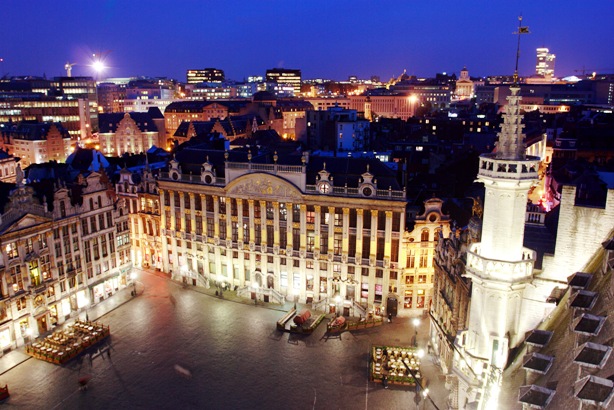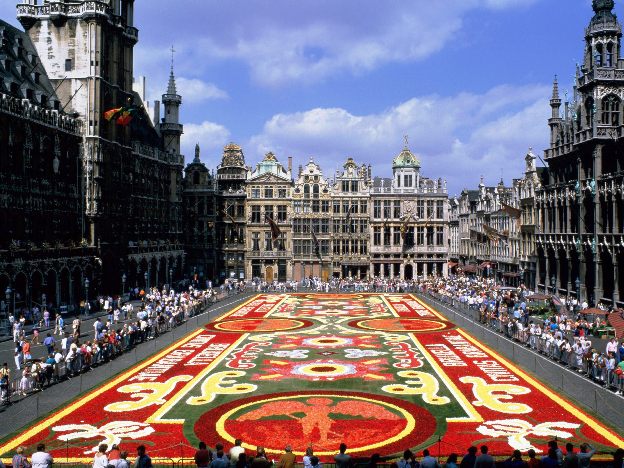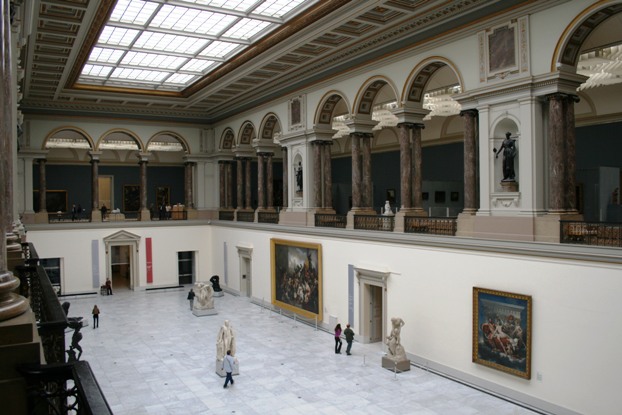Brussels is a recognized center of European culture as the city has numerous historical monuments. However, currently the capital of Belgium is more known for the high development of modern science and art.

The symbol of Brussels is the famous Manneken Pis, The Peeing Boy, a fountain dating back to early 17th century, centrally located a few steps from the main square. Julien, as they call the sculpture of the boy is often decorated in various ways. To give him a dress is a particular honor which is only awarded to distinguished guests of the city.
In the historical center of Brussels there is the Grand Place, considered by many people as one of the most beautiful squares of the continent. Around it you can find the town hall, built in the Gothic style from 1401 to 1455, the so-called King’s House (1515-1525), the House of Guilds (1696-1720). Nearby sits the Roman Catholic Cathedral of Saint-Michel-et-Gyudyul.
Its construction took over 200 hundred years, from 1226 to 1490. Truly, it is a remarkable monument of the Gothic architecture. Around this spectacular building the business districts of the capital are located. They are surrounded by numerous shopping areas and very interesting and picturesque boutiques.
The upper city was built after the historical center. Yet, it has many architectural monuments belonging to the 18th and 19th centuries, including the ceremonial ensemble of classic Plaza Royale (1774-1780) and the Place de Martyrs (1772-1775). This neighborhood can be called a City of Palaces.
You will find here the Palace of Justice (1866-1883), The Royal Palace founded in the 18th century and rebuilt several times, the last renovation was done in the 20th century. Other interesting palaces include the Houses of Parliament (1779-1783), The Palace of Fine Arts (1922-1928), The Palace of the Century (1935) which was built to commemorate the anniversary of independence of Belgium.

The architectural appearance of the capital is not just shaped by individual monuments of the Middle Ages, Renaissance and modern times. The uniqueness of Brussels is all about the organic combination of antiquity and modernity. Some of the buildings constructed after the Second World War became landmarks of the city as they harmonically fit in the surrounding neighborhoods. First of such is the Central Station (1953) and two buildings dating to 1958, when a World Fair was convened in the capital: the Social Security House and the Board of the Bank Brussels Lambert.
The city has a great number of museums. Of particular interest are primarily those where you can see the paintings of the old Flemish artisans, and the heirs of their glory, the Belgian avant-garde painters. The paintings of the past centuries and the present time are widely represented at the Royal Museum of Fine Arts and municipal Museum of Fine Arts.
Belgians are keen to preserve historical roots, both of their own country and other countries. The richest collection of archaeological and ethnographic finds (including Egyptian antiquities) is the pride of the Royal Museum of Art and History. The extensive material collected by Belgian scientists during expeditions to the African Continent is on display at the Royal Museum of Central Africa. The majority of the exhibits was brought to Brussels from Congo when this country for several decades was a colony of Belgium.

The proud status of the European Capital is maintained by the appearance and look of Brussels. One interesting place definitely worth visiting is the museum of ‘Small Europe’ in the open air. It displays copies of the most prominent buildings and monuments in major cities of Western Europe, each 1/25th of the original size. A pride of Brussels is the Royal National Library, with over three million titles in stock.
Numerous educational and scientific institutions include the Brussels University, founded in 1834, the Free University established in 1970, the Geographic Institute, the Graduate School of Political and Social Sciences, the internationally renowned Pasteur Institute, and the Royal Institute of Natural History. The capital also hosts the National Academy of Sciences and Arts. The conservatory was founded in Brussels in 1832, and the Royal Theatre de la Monnaie opened in 1700.

